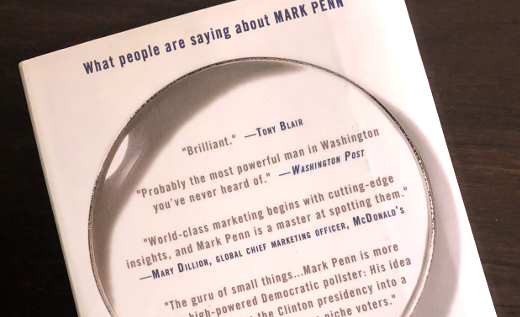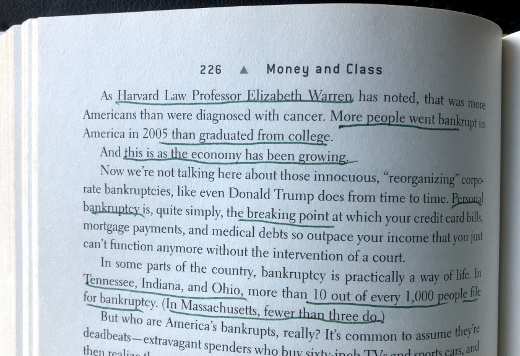My Takeaways From The Book Microtrends
While recently back at my aunt’s apartment complex, the same one where I got the copy of Steve Jobs I wrote about previously, another book caught my eye – Microtrends: The Small Forces Behind Tomorrow’s Big Changes by Mark Penn. What got me was the term, which reminded me about the days when I had my Web consulting business and people repeated tried to pound into my head about how I needed to find the niches to serve with my firm. Without even cracking open the book, I took it off the bookshelf and tucked it into my backpack just prior to my flight home, as this would be the book for me to read.
As I settled into my seat in my shiny metal tube taking me home, I quickly realized what this book was. First off, by skimming through the table of contents it was a book of many short paragraphs, each one on a microtrend, which was intriguing to me. What I also noticed at the beginning of the book was that it came out in 2007 – over 10 years ago! I was almost ready to just stuff it in my seatback pocket and leave it for someone else, but I decided to forge ahead and read it. This ended up being a very wise decision.
With 75 areas identified for potential, Microtrends gave me a lot to think about over that flight and a period of time afterwards, and as a result I had several takeaways from book.
There’s big opportunity in small places – The idea around microtrends are small, emerging and powerful groups who have a specialized need that can be satisfied by an enterprising businessperson who, if they do it right, can profit well from it. That is, if they realize this. See my comment above about what people were trying to pound into my head.
A 10-year old book on trends is still relevant – As Microtrends came out in 2007, it’s needless to say a lot has happened over the last decade plus. Despite this, there were many groups and demographics that are still active and relevant today as they were then.
More books need to be structured like this – What made Microtrends interesting to read was each chapter was no more than a dozen pages, which allowed me to read a complete topic on a trend within a few minutes… which sometimes was all of the time I had to read.
Don’t underline every other line in a book – I knew my copy of Microtrends was used, but abused too? Whomever had this book before over-underlined through the entire book, as shown in the picture of a random page of the book I selected. Interestingly, it is probably the first – and last – time Elizabeth Warren and Donald Trump were on the same page.
Where Microtrends was an interesting read, as I went through it, I wondered what the author would say about all of these trends today. Interestingly, earlier this year he released Microtrends Squared, with the next set of trends Penn has identified. I’m compelled to read it, to see if any of the original microtrends carried over from the first book to the second, as well as what he has identified as new microtrends.
So do I recommend a 10-year old book over a new one? Why not? The format of Microtrends – minus the underlying – contributed to the enjoyment of the book. As I pass along all books I read, this one I decided to leave in the lounge area of a hotel I stayed at recently. I don’t know if the book was picked up by a fellow guest or not, but I hope so.
This is from The Hot Iron, a journal on business and technology by Mike Maddaloni.
Did you enjoy this? Subscribe to The Hot Iron by RSS/XML feed or Read by Email.
Book Take-Aways • (0) Comments • Permalink





